1961 Ford Galaxie Starliner Fastback - Z - Code, Fully Loaded Southern HiPo
- Price: Ask a price!
- Item location: Canton, Michigan, United States
- Make: Ford
- Model: Galaxie
- SubModel: Starliner Z Code
- Type: Fastback
- Trim: Starliner Fastback - Z - Code, Fully Loaded HiPo
- Year: 1961
- Mileage: 44,631
- VIN: 1N53Z111XXX
- Color: Starlight Blue (D)
- Engine size: Z-Code FE V8 4BBL Thunderbird 390 Special
- Number of cylinders: 8
- Power options: Power Brakes, Power Steering, Air Conditioning, Cruise Control
- Fuel: Gasoline
- Transmission: Automatic
- Drive type: RWD
- Interior color: Blue Cloth and Vinyl (32)
- Vehicle Title: Clear
Ford Galaxie 1961 Description
Untitled DocumentThis is a 1961 Ford Galaxie Starliner (63A) Z-Code big block “Thunderbird 390 Special” in Starlight Blue (D) exterior with a blue pleated cloth and vinyl (32) interior. It is absolutely loaded with options and includes a Cruise-O-Matic (4) with 3:1 (6) axle. It was made in Norfolk (N) Virginia and scheduled for Nov 7, 1960 (07L). This car has been sitting in storage for most of its life. It looks tired on the outside, but is a remarkably original gem under the visible signs of long-term storage. This is a no reserve auction to sell this car this week. I will take you on a tour below.
The 1961 Starliner blends many great styling elements into a subtle and complete package. It doesn’t look contrived or unbalanced like so many of the other attempts to graft aero styling on existing cars in the 1960’s. Despite being a specialty car I’m actually shocked that this car is so rare because it seems it should have sold better. But I am not surprised that Ford brought back several of these styling elements in the 1963 Fairlane and Galaxie to try to stem the rising tide from Chevrolet. To me this is the best of their best -- their best roofline on their best flanks, jet taillights and subtle fins paired with their biggest engine. This particular car then adds just about every underhood option imaginable. And they are almost all still intact.
One of the fun things about this car is that many of the Norfork built hi-performance Fords headed to North Carolina and beyond were stripped down beasts with three speed overdrives (or later 4 speeds) destined for a very hard life. Many clones have imitated the configurations of these remarkable cars that reigned during the very short full-size performance window -- before midsize FE cars took over. However this buyer, whoever he was, wanted to have it all and ordered the Starliner aero body, the top of the line Z code engine, and then just about every underhood option on the order sheet. I don’t remember ever seeing this much stuff on ANY 61 Ford before. Sure there are a couple more luxury items he could have added. He could've gone for the insanely priced Select-Aire instead Polar-Aire, or added dealer kitsch; but this car has most everything you would expect on a premium American luxury cruisers. My point is that this is the opposite of what most Norfolk high-performance Fords headed to North Carolina for street or special duty in 1960-1964 looked like. This car is the real-deal but has far more daily driving potential than the no-power-assist three-on-the-tree cars. Take a look for yourself.
This “feast-or-famine” option situation exists because the solid-lifter engines did not produce consistent vacuum or spin in the rated range for the power accessories. So you had to go solid lifter and basically no options or hydraulic lifter and anything else you want. This buyer selected the Special and added from there. That being said, over many years, I have collected the various correct and rare solid-lifter and severe-service options available for the 1961 Z-Code that this owner was not able to select while keeping the power and vacuum hungry accessories he wanted. And like most people who have probably owned this car over the years I imagined that I would re-package this car in the meanest legit incarnation of itself that its pedigree permits. That’s what people expect and want in a 1N53Zx car when they see it at a show or buy one. But there is just something so charming about the fact that this buyer went the other way with this car. It seems a shame to transform it into the lean racer that everyone expects when they walk up to one. It’s just so plush that I have to grin when I look under the hood. And so it won me over andit was destined for a standard restoration instead. But your vision for this car may be different. If you would prefer to go the solid-lifter-hipo-power-assist-nothing direction with this car, then we can talk about how I can help you by listing for sale many of these nearly unobtainable parts to help you go in that direction instead. I chose not too, but I respect that route.
Why am I selling it? This year both of my restoration partners passed away, and this not only left me with quite a backlog, but it also helped me decide to not spend all my time rebuilding cars and relics anymore. That means that the items I am bringing to sale this year were not purchased to be sold. These are my cars that we were restoring to keep. And I also want to point out that this is a no reserve auction because my goal is to sell my cars quickly and efficiently for close to market value. I am not a dealer looking to promote my business or build inbound call traffic with bogus reserve auctions. This car is here to sell this week to someone who will enjoy it. So please take a close look and bid or pass it along. This car deserves a good home. I'm going to try and publish as much detail as reasonably possible so you can make as good of a decision as possible about whether this is what you want, and I then can move on to the next car. I’m sure I’m going to give up some dollars just letting my cars fly out the door with blemishes and faults fully documented, but I’m going to list these as I would like to see them listed; I need happy buyers and I need to move on. I will help whoever buys this car get the parts they need to transform it into the version of the 1961 Starliner they envision, if they ask. I’m not in the parts business for everyone, but I do have a significant inventory or connections for the special 61 fords to help out my new owners.
General Condition: Have you ever wished you could find a 60’s performance car that was highly desirable and remarkably original but still attainable? Do you prefer a car that looks about like it did 50 years ago, to be decoded and carefully re-assembled without guessing how things should be? Do you prefer to not be the third guy peeling back the “layers of the onion” of previous repairs that are not up to your standards? Are you keen to avoid an incomplete car where you spend the next three years finding all the specialized parts that were scavenged to make someone else’s hipo car complete? For me the fun cars are the cars that somehow avoid these pitfalls. The ones that hid from the opportunities to be upgraded, scavenged or improved for most of their life. This car is, for the most part, that car and I love this kind of project. I want a car that needs enough that I can get into it at a reasonable price, without paying for work that I would want to redo anyway. And it has to be desirable when done. Ideally such a car must be original and complete enough that I know by looking at it what it is supposed to look like when I'm finished. I’ll take worn out factory interior or paint job over any quality re-skin or re-paint every time. I hate restoring restored cars. That is why I own cars like this.
Sitting and waiting somewhere hot: This car sat for a very long time. The Firestone Deluxe Champion Bias Ply H78-14 tires are no newer than 1976 and the NC road-use inspection sticker expired in 1989. The car is faded and the paint is weathered. But under that is a car that is remarkably complete and correct, and I love such cars. I will do my best to document what this looks like with a deeper dive so you can see past the “20-foot” pictures in the eBay listing header.
Luckily for you, this pale paint color and the pale clay dust underneath hide no sins. You can see all the places anything is going wrong in the body and joints. A repainted, dark blue, green, black or red car would hide all of this. But in this aging finish you can see every place the paint has lifted, or iron oxide is leaching through to reveal a crack. It’s like Magnaflux for a whole car. This might scare those used to prepped cars, but for me this is beautiful information I do not want to destroy until necessary.
You will notice some close-ups show rust bloom that is ugly and could have been easily buffed off for the pictures. Yet in other places things seem super clean. If I was working somewhere on this car I might clean the streaks or surface, or remove a piece of trim and clean under it to see what it hid. But I did not consciously clean up all the staining along the lower body fringe or reduce the large “eyes” of iron oxide that expand beyond any violation of the paint. Normally when you see a car that looks like this in northern climates the hair on the back of your neck gets stiff because this visible rust is the tip of the iceberg, but this car has been dying from exposure, not salt spray. Therefore the majority of the problems are in your face. I’ll document that for you, because you need to see it for yourself. But it will take a ton of pictures to do so.
Value: If you want to rebuild a classic 60’s muscle car you should start with something worth doing. I see a lot of base engine project cars and can’t imagine how exactly these can be worth the time and effort. Why do a six cylinder or Y block when they made a small block. And why do a small block if they shipped a big block that year. You probably shouldn’t invest in those any more than you should be working on a four door if there was a hardtop or a hardtop if there was a fastback or convertible. Regardless of when you plan to sell your car the value of the finished product is determined by the number of people out there who want to buy it. So starting out with the most desirable body style, trim level, colors, engine code and options is a great insurance policy against other mistakes and costs along the way you can’t know -- especially with respect to things you can’t change later. This car meets those demanding criteria for a car worth restoring. Plus it has good fundamentals and completeness. I can’t tell you the value of it to the available pool of restorers buying right now. So I will let the market tell me this week by letting it fly out of here with no reserve. It is what it is.
Appearance: This is probably one of the few cars I’ve seen that looks worse to most people at twenty feet than up close. I’ve invested almost nothing to make it photogenic. But when you start to dive into the details they bring out the value hidden by an aging paint and its baked-in rust and water stains. We all hope our car is better than the pictures when we buy remotely, but it’s rarely true because of how bad the photos are and how cars are prepped to promote the highest sale price. So I’ll do my best to show you what we have here. I did a bit of stain removal when I was working on something or exploring condition, but left most of the sources of stains as is, which is good for you because it acts as a roadmap for where to look for possible trouble. This was only cleaning not sealing, so this pale car will give you a great rust bloom and streaks back if you let it get properly wet and want that look.
Or you can acid wash the rust stains away, touch up the bruises and seal it to keep it this way. Either way you want to go, that’s your call, I’ve left it alone for the most part. So before you discount this car based on the weathered condition of the exterior you need to look at the detail and undercarriage photos. Read it all. Then decide. We didn’t buy this car for its surface appearance. We bought it for its fundamentals and potential based on what work we were willing to do and its finished value. You must do the same. Please look at the detailed photos and if its not for you then pass this along to someone who might appreciate it.
Rust: I am not going to tell you that all this discoloration is all cosmetic. There are a few spots with skin perforation or even minor visible repairs, but I didn’t paint anything on the body to hide those failings. I will try to photo document problems and call them out for you in the composite photos. You or your expert’s opinion may vary from mine, but you will have my visual documentation, which is as complete as I can practically make it given the time constraints I have per vehicle.
Barn Finds: The two biggest problems with barn finds are (1) They’ve been in a barn for a long time and you don’t know why they were parked there, you often lack any history and you don’t know how much damage this type of storage imparted to the various invisible systems you won’t get to see until much later. (2) They still are in a dark damp barn and you are probably going to have to make a decision on the spot based on your intuition, a flashlight, a piece of cardboard and a bag of cash. Well, maybe that’s what I had to do, but I’ve taken that risk already and here is the result. I respect that you can’t easily come here and do the same, so I will try to give you the most detailed picture of a car you have ever seen. Hopefully it will be enough to inform you as to its fit for your plans.
Completeness: It seems most specialty cars I inspect have unobtainable pieces missing, and signs of a rather rough history. I put a premium on completeness and originality over many other attributes of value. I mind a lot less the need to touch everything myself and I don’t like paying for other people’s work that II don’t trust. This car passes those tests. Only a few things have been done so far. But it is remarkably complete and correct. In complete cars you know what you have. For most things you have the pieces you need until you find better ones. I would not buy a special production car with most of the trim or glass or unique parts missing, because that’s where you will end up spending all your time and money from that day forward. In fact I sometimes suspect that the owners of stripped limited production cars are all just passing around the same small pool of parts. For this one, completeness on unique parts looks pretty good.
What Do I Mean by “This Car is Loaded”: Let me qualify myself to make this statement. I’ve had a 61 Ford in the family since Ford shipped them. I currently have three complete 61 Ford Galaxies. Needless to say I have looked at any 61 that ever showed up at a car show or parking lot in the last fifty years. In that time, I can not remember ever seeing a 61 more heavily optioned than this car. And it’s not just bolt a bunch of brightwork and dealership kitsch. These are driving enhancements. The salesman must have been grinning from ear-to-ear adding up those boxes on the order sheet.
Check Out These Installed Options: (#53-63A) Galaxie V8 2-Dr Club Victoria Starliner hardtop ($2713), (#D) Starlight Blue paint, (#32) pleated cloth-vinyl blue interior trim level, (#Z) Thunderbird 390 Special ($197), (#4) Cruise-O-Matic transmission ($212) with 3:1 axle ratio (#6), electric clock (pkg), swift sure power brakes ($43), master guide power steering ($82), Polar-Aire conditioning with tinted glass ($271), cruise control (throttle control), console range AM radio and antenna ($59), wheel covers ($19), Magic-Aire heater and defroster ($75), 1958 style dual premium logo mirrors and horn ring, front bumper guards, rear bumper guards, hood ornament, rocker side moldings ($16), drip rail moldings (pkg). bright rear quarter applique (pkg), full length body side molding (pkg), chrome door-handle cups, backup lights and fender ornaments (pkg), anti-fume crankcase ventilation system (pkg), electric windshield wipers, etc…
Interior and Interior Options: 1961 was a year away from packaged interior and trim options such as the 500 or 500XL which begin in 1962. There are at least 17 different combinations of vinyl and cloth colors, but no super or premium packaged interiors that show up in a door tag or VIN code. There are items that are likely to be together or prerequisites, but without delivery docs to go by, you can pretty much shop the same list as the original owner would have at the dealership and build up a correct car. This car has a ton of options and we can’t say when they arrived on-board, except that most are correct and look to have the same level of age and wear. The tasteful blue pleated interior is quite nice. He also picked out a good portion of the a la carte options; not every possible option, but many. I’ll let the photos speak for themselves on this one. I really like the 58 Ford style premium horn ring and pair of matching logo mirrors. They are classy and go well with the premium look of all the other chrome and stainless extras on board.
Engine and Engine Options: In 1961 the Z-Code represented all the top-of-the-line Thunderbird Special 390 engines. It would be 1962 before the hydraulic lifter, police, solid lifter 4-barrel and 6-barrel engines all had unique documented engine codes. So one must go on documentation and installed equipment to guess which engine was shipped in any of the hi-performance Z-Codes in 1961. (A Z-code can be the Thunderbird 390 Special, Thunderbird Special High Performance V-8, or Thunderbird Special (6V) V-8). If you want an automatic transmission or any power accessory then the Z Code version you will get is the Thunderbird 390 Special. That is what this car should have been built with given the options it has. That’s version is a hydraulic-cam 4-bbl version that will keep all the power accessories alive and generate adequate vacuum for power brakes and such. Although most people stop way short of making the cars correct in every respect when recreating these engine options for show – including sticking with a hydraulic block and heads when they shouldn’t -- it is possible to completely move from one performance option to another on a Z Code chassis. It is not trivial however and requires changes the entire length of the car. These differences are not just about headers, intakes, carbs and a proper pulley diameter. Many of the special severe service parts for the later 406 and 427 cars got their quiet start on hi-performance 1960 and 1961 cars like the Starliners.
On this car you may notice the valve covers, alternator, oil pan and a few other pieces are too late for the date of this car. Again I could have easily swapped those obvious items but I didn’t because they work fine and it doesn’t make the engine correct to have just the photo-visible items date correct. This car appears to have been upgraded to 1965 specs very long ago. I’m sure they were happy to get the alternator compatible head stud holes and more reliable charging. But don’t let this deter you if originality is more important to you than it was to the previous owner, I do have a rebuilt C1AE-6015-G long block that is complete from oil pan to intake and I can add the correct valve covers to complete your Thunderbird 390 Special configuration in 1961 form. The heads and intake on that rebuilt engine are not the right codes either, but the ones on it look fresh and the correct 6090-A heads are easy to find. I can help you source those later. Giving you this engine will get you much closer to all 1961 dates. You will need to provide freight for these parts if you want them with the car. Or, stay with what you have in it. It runs and charges better than a correct 61 configuration would. And to the casual critic it is physically very much what it should be. Put a generator and proper valve covers on there and most people wouldn’t notice. And I mean most. But if you want to go further I will throw in some items to help you. Just ask.
Running Condition: I did carefully bring it up to spinning and then later running. It got a tune up with full ignition parts and of course all fluids and filters swapped. The differential that someone recently touched is leaking (see photos) and you can hear a bit of whine in the power steering pump at idle in the attached videos. I did do a quick cleanup on the Autolite 4100 4BBL and it starts and runs. The choke is not adjusted yet, but once you get it started it idles fine and can move around under its own power. The right front brake is grabbing when I tap the brakes. I’ll try to look into that before anyone needs to get it on the transport. All four corners have rebuilt brakes with new hardware, so this problem has to be some kind of adjustment or final assembly problem by me. No biggie.
Other Items Completed Recently: When I got the car someone in recent years had done some cleanup around the fuel tank and on the differential. The chassis black highlights underneath the rear areas are from that endeavor. Someone started to do a little work back there and painted a few pieces while they were there. They also tried to deal with the trunk seal problem by punching holes in the trunk floor. Argh. These trunks are susceptible enough to corrosion so that is not the preferred approach to dealing with water. I’ll cover that in more detail under Trunk.
Also the previous person who was working on the rear end started on the front suspension and removed a few things. So in some pictures you will see a missing end-link or exposed shock mount bolts or such. I have now reassembled those. When I was under there taking these pictures it seemed silly to document that when I could just put those back together with new parts while the car was on the lift. So the suspension is now as complete as the most complete photos included. But some suspension parts may seem to jump on and off again in the photos.
Clearly the under hood maintenance items replaced were part of my slow startup procedure for old-stored-cars. The red oxide suspension and brake parts are from me. I always get my cars to start, steer and stop when they arrive so my cars are not parked obstacles. So this car has had that treatment. As for stop, you can see from the pictures that the brakes have been completely off including the backing plates that were blasted and painted red oxide. This was a basic rebuild of everything stock including new wheel cylinders, master cylinder, some new lines and a change away from glycol fluids for storage longevity. You may also notice lots of white spatter in undercarriage pictures. That’s because I tend to overuse white lithium grease on everything and it spatters about. When I used it I wasn’t trying to look good. Nobody was ever going to see it but me. But now they have.
I also popped off some body trim and castings to get pictures underneath and see if the colors oozing out from under were the sign of something really bad, but they were not anything too exciting. So I have some pictures of a couple of body items partially disassembled. But the car is back together as it was, but with the updated running gear and the engine tune-up. I hadn’t really gotten to anything else other than cleaning out the doors and cavities for inspection purposes. Now it’s your turn.
Paint and Rubber Seals: Paint looks to be mostly original with a patina that could be improved in place without being removed. There are some signs that someone touched up a few things at the bottom edges or tried some small area painting long ago, but most areas are old worn failing paint. Normally this bodes well for rubber seal reusability not having overspray, but in this case the seals are really cooked on the doors and lids. I think I will gladly take condition over reusable Midwest rubber seals on rotted Midwest metal. So I won’t complain.
Door Jams and Window Frames: The doors jams and window frames look pretty good to me. Looking in the cowl and vent sections I saw nothing of interest in there. My concerns lie in the crimp of the skin to frames for doors and lids where they have been damp for a long time. I suppose some people could clean, fill any gaps and paint those but I would like to dip those edges and see what I have to work with before I committed to a plan. I have added photos of those sections.
Doors: The door seals are turning to mush and the metal orange, but the bottom side crimped ribs to hold the rubber in place are still there, unlike my Midwest cars. I think the rubber vent covers in the corners are gone. These are the holes at the ends of the doors on their underside. No biggie. It’s been a couple of years since I was inside them but I remember thinking that I wanted to try dipping the bottom six inches of these doors in an agitated heated chelation tank before I passed judgment on them. I’ve had great luck with these agents to reverse and remove corrosion in tight joints and tough to reach panels. It’s magic. The doors are quite brown on the inside and bottom but the paint on the outside is holding up. I remember I was thinking I might reweld the tips of the skin crimps in the passenger side if it was cleansed by the bath but split. In the process. I also remember that the vent window on the passenger side is messed up, but I didn’t sweat that either because I have another entire assembly to replace or repair it. That spare now resides in the trunk in bubble wrap ready for you.
Trunk and Hood: The seals on these are mush from the years of heat but still completely there. They have caused water to sit in the trunk which is not good but the damage is localized. These lids look really nice from a distance and the skins are nice from on top despite the rust stains. I have some questions about the crimps of the skin to frame at the leading edges. There is some corrosion there. I have another hood if you decide to do two and see which turns out best. The other hood is repainted and from NY so who knows what is under that paint. You will need to ask for it if you want it and pay for freight.
I also see some drain holes punched in the trunk floor to keep it dry. This was to deal with a bad trunk seal. I would have preferred they replaced the trunk seal instead. This water history makes the trunk floor look awful and rust orange, but I would probably try to repair the pitting and reweld the punched holes and save the trunk floor. It’s not as bad as it looks at a distance and I don’t like complete panel replacements if the panel is generally solid. The brown trunk sections are because the paint entirely disappeared when I vacuumed it because it had lifted. If you look closely it isn’t too bad back there, especially in the remainder of the space.
The expanses of rust colored metal at the sides of the trunk floor above the spring mounts are really missing paint from when I vacuumed the trunk and the paint disappeared into the vacuum. The only problem areas in the side wells are at the tips of the trunk drops on the deep wells of the sides where they meet the quarter skins. There is a gap running along the bottom where the seam just disappeared. This evidently happened long ago, because it looks like this is the reason there was some fill and paint at the very bottom edge behind the brightwork. This is remarkably common and I have pictures for you.
Underbody Panels: The pans in general look pretty much original and untouched. I love the mud and orange clay stains under there because it makes a great contrast dye. This color dusting highlights a lot of detail that I can’t see in black or gray undercoatings covering these in other cars. Most bumps and textures you see are just southern mud. I will try to show pictures of any of the rust in the floor-to-toe-kick-seams. The only clear repairs someone attempted, were some fiberglass in a hole at the interface of the tunnel, to the firewall and floorpan. This is common in my Galaxies or in these cars with under dash AC cars. This localized and should be well covered in the pictures. In many ways this car looks better underneath, believe it or not. See for yourself.
Fenders, Rockers and Quarter Panels: Stamping dates look consistent. There are a few problems on the very lower edges and corners and I will document those for you with pictures rather than trying to describe them. When you look at the pictures from underneath they don’t look that bad. The rust staining on most of the panels and peeling doesn’t really concern me that much. Again, I have this photo documented for you to make the call.
Interior Upholstery: The front seats were fine until I started sitting in there to suck out the detritus and look inside the doors. The strain from me doing that cost us a couple of stitches in the shoulder of the drivers seat. I have not touched the seats or interior. The rear seat cushions are very good but a bit dirty. The top of the seat backs are baked from the sun. The carpet is typical, old and dirty but not completely deteriorated like some of my 61 carpets. You should have everything here you need to replicate it or preserve it.
Dash and Instruments: Dash areas look pretty normal. I know almost nothing about the condition of the dash and accessories. I haven’t touched them because I’ve been focusing on the major things and these come much much later for me when working on a car. Completeness looks good.
Wheels and Tires: Wheels appear to have the right date codes to match other metal stampings. (see photos to confirm) The wheels are FoMoCo 0MM and 0MK dated which sounds about right. They look weathered and peeling but are pretty nice up close. This is yet another thing you don’t need to go looking for, except maybe a fifth one that matches. I’ll look into that if you ask. These Firestone Deluxe Champion Bias Ply H78-14 tires just look right on these old cars. Coded VLWB T1Y256 and VLMB T1Y156, these are no newer than 1976 and look the part. It’s another sign that this beast has been sitting a long long time without changes or use. These will get you through your restoration despite their aging. They hold air well, but clearly they are way past their “expiration date” so please don’t drive on them.
Bumper, Chrome and Stainless: The rear bumper has one perforation under the left rear bumper guard. It’s like the bumper guard held water against it or something. That bumper guard was badly compromised so I purchased another pair, swapped it and threw the rest of the piece in the trunk for you. This is another one of those parts that is crazy-expensive to replace, but the car should be fine with what you have now. The rubber tips are only $19/pair though. The rocker molding holes and clips tell us that it had the factory rocker moldings. Those can be purchased to mount with the factory holes or with new bracket/clips. I can help you find those from a vendor. The one remaining on the passenger side is pretty rough. I haven’t touched it. Other stainless and aluminum is pretty good. The door cups are pretty rare. There are a few bumps on headlight surround aluminum parts. The special cast and stainless Starliner body parts are all there. I think one of the fender scripts is cracked. These can be purchased. The plastic blade for the hood ornament will be in the trunk.
Glass: All the special glass and window trim for this car is there! I threw in a spare vent window for the passenger side because the one there was not in good condition and missing the handle. Hopefully I will have adequate photos for you. There are a couple of delamination bubbles in side glass, I will try to get pictures. I do have a source I can share for glass for these if you have the frames, which you do!! Don’t buy one of these cars without complete fastback specific window parts.
Title: I personally own this car. I can sign it over upon presentation of cash or after proof of payment plus appropriate delay.
Parts I can include to get you started if you ask: (1) A set of rear bumper bullets, these things go for stupid-money and one on the car was not readily salvageable. I had already bought a replacement pair. (2) A 1961 G Code FE rebuilt long block with correct oil pan. I haven’t cracked this open since it arrived but it looks like it has yet to see oil. This will begin to reverse the 1965 FE engine parts swap if you want it. I can’t put it in the trunk. The intake and heads on it are no closer to a match than what is on the car, but they look rebuilt. The correct intake, heads and generator are easier to find at swap meets than the engine or pan. That’s why I’m giving you the 61 block if you want it. (3) A set of correct valve covers for a Thunderbird 390 Special. (4) A set of decent hubcaps to give you the correct HiPo look with those matching painted wheels. (5) A car cover. A mid-grade outdoor car cover I use when I need to park cars outside for a few days during projects. All of my cars have one, including this one. (6) Passenger side vent window assembly to replace the one on the car. (7) If you care about originality I can probably get you a C1AE-AH from my parts inventory. Ask about it. (8) I have another hood, but it might not be better. (9) If the distributor is also wrong I know I have the C1SF distributor somewhere. The advantage to the parts on the car now is that you know they work. Give me a list of the items you want when you take delivery and I will package them. The hood and engine would take special arrangements.
Upgrade options not included but available after the sale: I have or can point you to most of the parts to get you to the correct 300hp, 330hp, 371hp or 401hp Z-Code versions configured by the factory or dealer in 1961. The first two are pretty much corrections to what this car has and we’ve talked about most of those items above. The second two are not trivial migrations because they are solid-liter severe-service configurations. They require several items to be removed or replaced and look essentially like 406/427 vehicles when done, but they are entirely doable. I’ve located or picked up most of these difficult-to-find parts such as: special 6015-v crank (c1ae-a, c1ae-c), oil pan, crank pulley, pistons, hydraulic and solid lifter date coded blocks (clae-6015-g, c1ae-6015-v), intakes (c1ae-9425-b, c1ae-9424-c. c1ae-9424-e), codedAutolite and Holley carbs (c1e-9510-ag, c1ae-9510-ah, c1ae-9510-a, c1ae-9510-am), correct heads (c0ae-6090-d, c1ae-6090-a), proper generators and accessory pulleys, severe service wheels (c1az-1007-a), oversize fuel lines and pump (coaz-9350-d), header compatible brake lines, fuel filters, manual trans and steering conversion parts (4848330), 1961 R85 3-speed OD transmission, 1962 T10 hipo transmission, severe service backing plates, springs, cast iron headers (c1ae-9430-c, c1ae-9431-c), specialized ignition (c1sf-12127-a, c0af-12127-k), brackets, header compatible exhaust, etc. I share this list to convey that it’s not just an intake and carb to jump from one version of the car to another but it can be done in 1961. In 1962 and beyond you are coded to one engine configuration alone so you know what it should be, but you lack this cool body style.
Warranty: Clearly there is none. This car is for someone who knows what he or she is doing. I've tried to describe it based on what I can see and what I have so far touched, but I am not omniscient. When in doubt trust the pictures. Use your best judgment or send someone to confirm the facts. Then have some fun figuring it all out.
Transport: You are not going to be able to turn the key and drive away. It should start and drive onto a transport. This car needs careful sorting-out to make sure everything is safe and happy before committing to the road. It is also residing on 40 year old tires. So unless you are filming an episode for the Hot Rod Roadkill team, plan on safe transport to your preferred location to dig in and have fun. I'll ship it wherever you want it, once the payment has been cleared by my bank. They will determine our minimum timeline, not me or you. You will need to provide the courier and provide for shipment of any pallets of extras should you want the items I listed as available for the asking by the winner. I will commit to having those items on pallets at my house for pickup.
Payment: I expect that you can pay for it if you win. I need to move on to the next car so please help me to wrap-up this transaction by providing for quick payment according to the posted eBay T&C. I will make second chance offers if necessary to get this thing to move on out if the winning bidder is a flake. So keep in touch even if you lose.
Parts mentioned as available but not included: I have the items to transform this car to other factory shipped configurations if the buyer is interested. I will place those in another auction for the buyer if they ask me. If you are not the buyer, please do not ask me to list parts right now. I’m saving these parts for the people buying my cars which is my focus. If I happen to mention that I have the hipo part you cannot live without, set a reminder to call me in a year when I will have sent my cars off into the wild and I know what I don’t need. In the meantime I’m here to help those who share a vision for my cars reach it.
That's about it. When in doubt review the photos or ask questions. Enjoy. Thank You. Stephen.
For those who cannot view the photos in the repository below, please email me and I will post them in other gallery tools for your review.
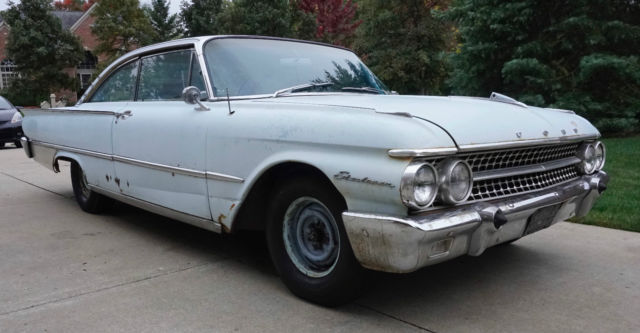

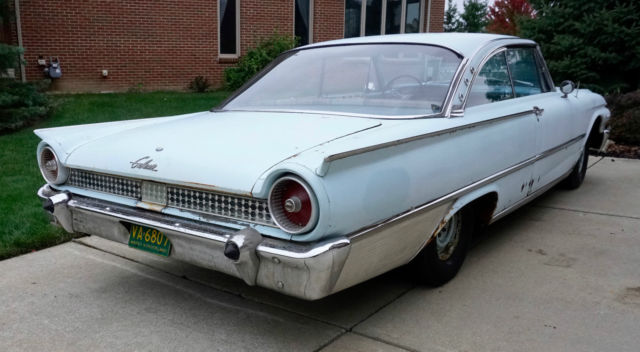
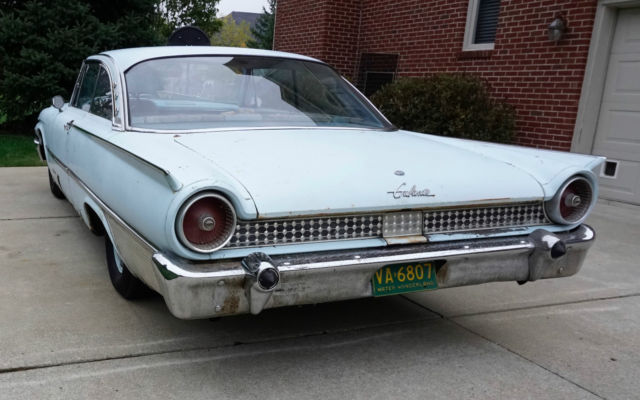
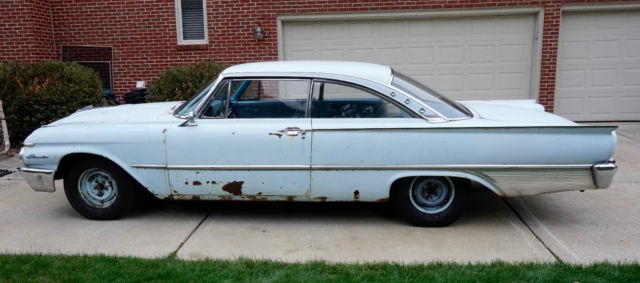
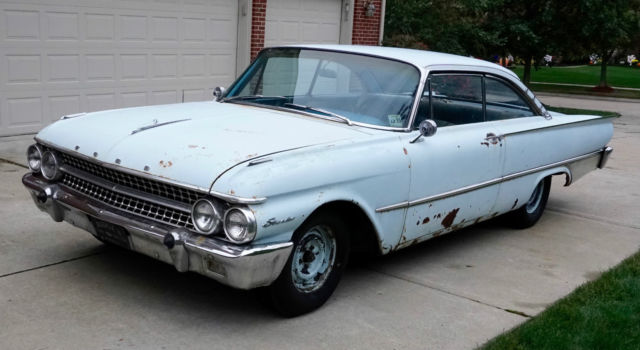
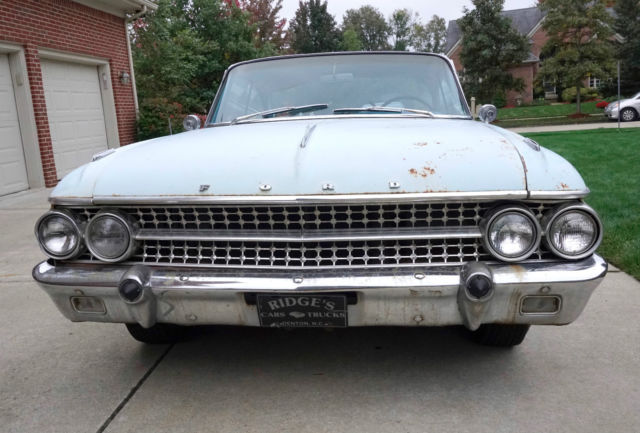
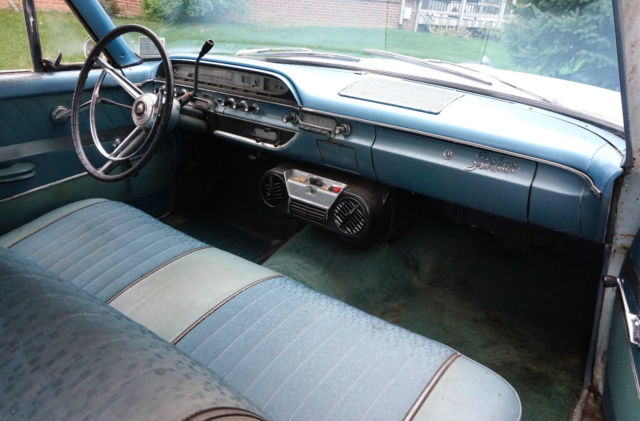
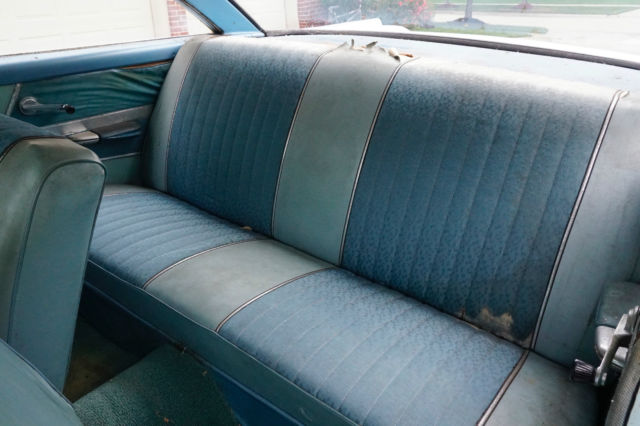
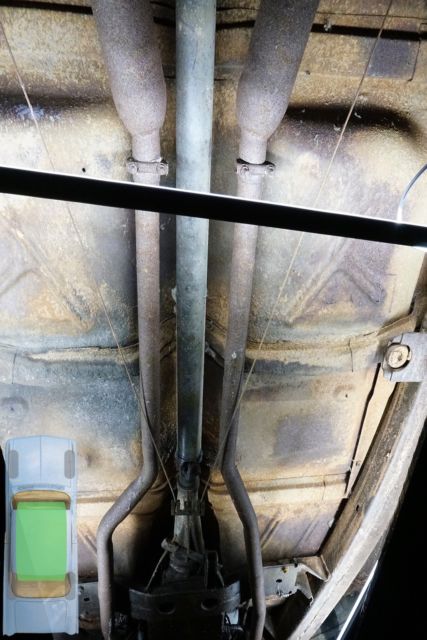
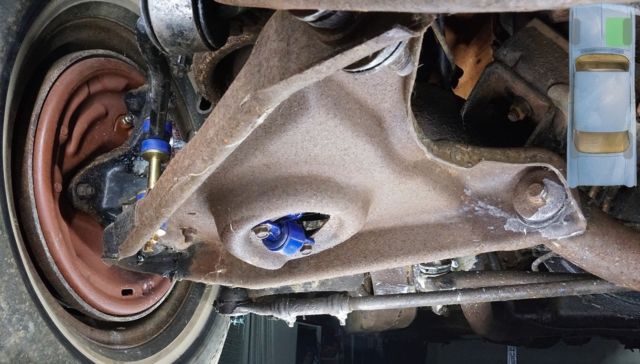
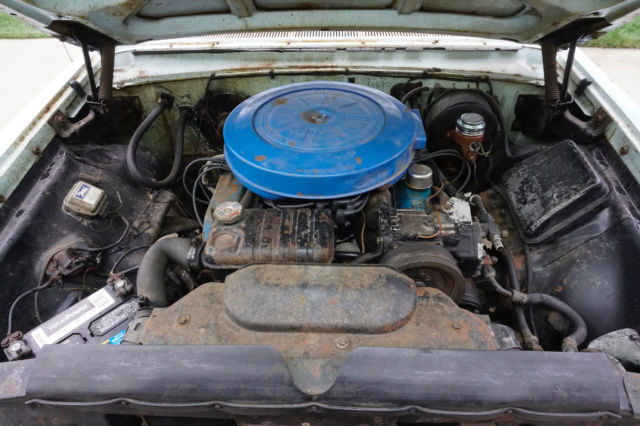
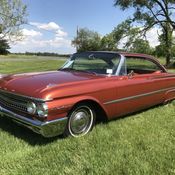 1961 Ford Galaxie Club Victoria Starliner ** Rare Starliner **
1961 Ford Galaxie Club Victoria Starliner ** Rare Starliner **
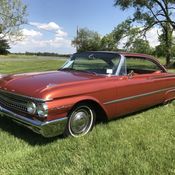 1961 Ford Galaxie Club Victoria Starliner ** Rare Desert Gold Starliner **
1961 Ford Galaxie Club Victoria Starliner ** Rare Desert Gold Starliner **
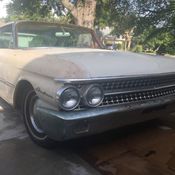 1961 Ford Galaxie Starliner 6.4L
1961 Ford Galaxie Starliner 6.4L
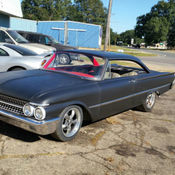 1961 FORD Galaxie Starliner Roof Swap
1961 FORD Galaxie Starliner Roof Swap
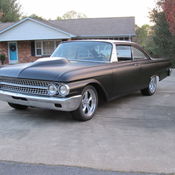 1961 Ford Galaxie Starliner 5.8L 2 Door Bubbletop
1961 Ford Galaxie Starliner 5.8L 2 Door Bubbletop
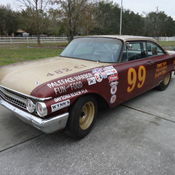 1961 FORD GALAXIE STARLINER "FIREBALL" ROBERTS TRIBUTE RACE CAR
1961 FORD GALAXIE STARLINER "FIREBALL" ROBERTS TRIBUTE RACE CAR
 1965 Ford Mustang K code 289 HIPO 2+2 fastback.
1965 Ford Mustang K code 289 HIPO 2+2 fastback.
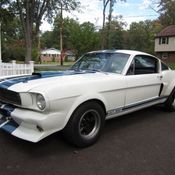 1966 Ford Mustang K Code 289-HiPo Fastback Barn Find
1966 Ford Mustang K Code 289-HiPo Fastback Barn Find